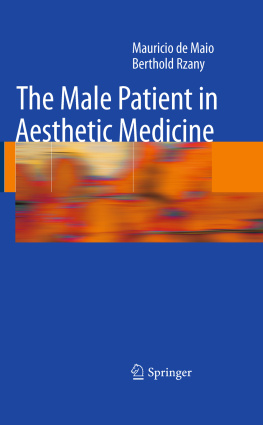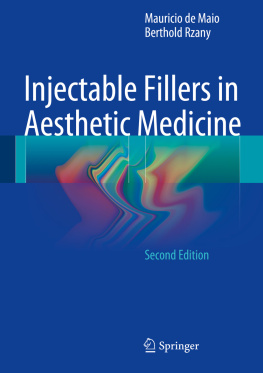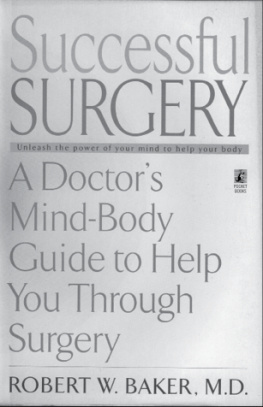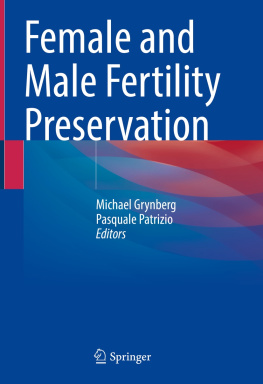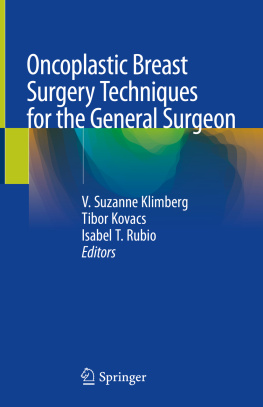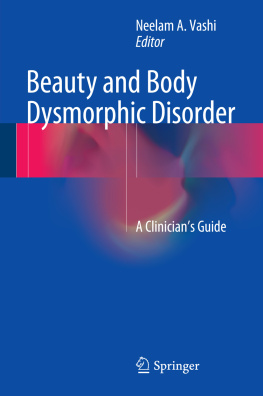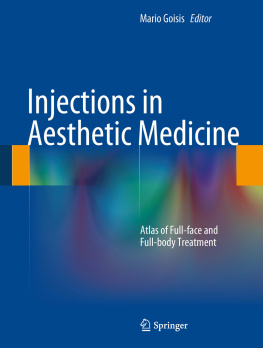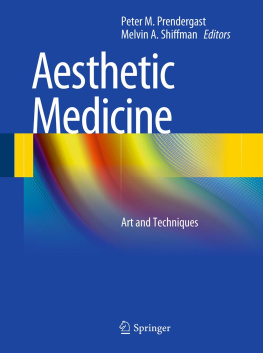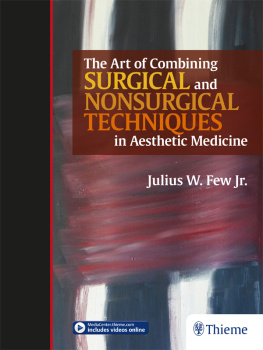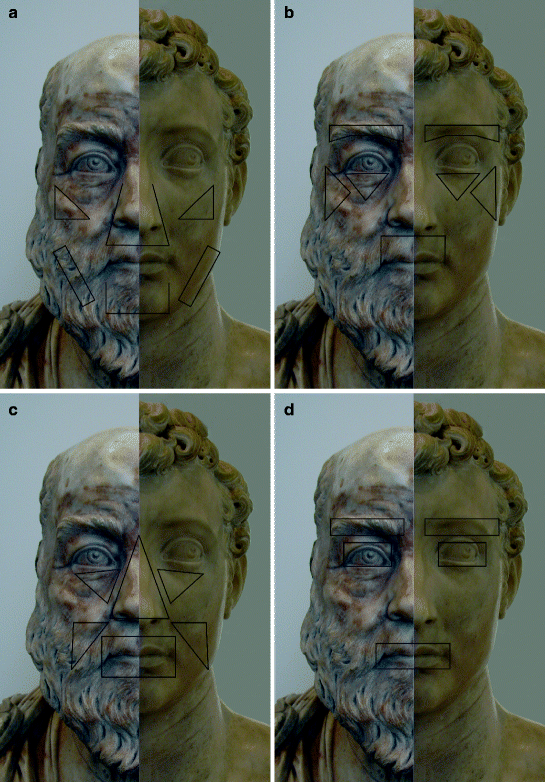Mauricio Maio and Berthold Rzany The Male Patient in Aesthetic Medicine 10.1007/978-3-540-79046-4_1 Springer-Verlag Berlin Heidelberg 2009
1. Facial Aesthetics in Male Patients
Mauricio de Maio 1
(1)
University of Sao Paulo, Av. Ibirapuera, 2907 cj. 1202, Moema, 04029-200 So Paulo SP, SP, CEP: Brazil
Mauricio de Maio Plastic Surgeon, Faculty of Medicine
Email:
1.1 Introduction
The human face presents an incredible array of emotions, which are an integral element to beauty. This is consistent with the observation that beauty exists in many forms and that many beautiful faces do exhibit imperfections in one or more features. Some of those imperfections that are not acceptable in women may be pleasant in men.
The ancient Greeks concluded that beauty is best described as an intuitive appreciation of the symmetry, balance, and harmony that exist between the various facial features. Even with a perfectly proportioned face, there is huge variation in coloring and in the shapes of each facial feature (eyes, eyebrows, lips, nose, chin, etc.) that combine to result in a distinctive appearance of each race and provide for endless variations in beauty that are unique as each individual.
Developmentally all human faces begin as essentially feminine even if genetically male. The genetic male face gradually transforms into the male configuration through multiple exposures to testosterone. The female is considered to be the more attractive sex in the human species and so is the female face. It results from the necessary strategy to attract a mate, and so women evolved to become physically more attractive or beautiful than males. Interestingly, not only men find women attractive, but also other women, children, and even infants do.
Visual attractiveness strategy is seen in the animal world, where males are usually more attractive than females, who are the mate choosers. Male animals have evolved to be the more beautiful sex, and it is represented by intense and unique colors and usually by courtship rituals. In our species, a male is attractive in a different way than female so much that to refer to or call a male beautiful is actually not a compliment to most males. Males are attractive when they are powerful, intelligent, and rich. So, why should a man look good then? So that he becomes more powerful, more intelligent, and richer!
1.2 Facial Landmarks
There is a strong revival of interest and enthusiasm for the Greek and Roman beauty style. In addition to beautiful bodies, dramatic contours of the face accented by strong noses, significant malarmidface configurations, and sharp, well-defined jaw lines have become hallmarks of contemporary male patterns. Concepts and standards of facial beauty have always been associated with anatomic contours of facial form. These contours are a result of the location, volume, and mass of the facial soft tissues, as well as their relationship to the underlying facial skeleton. The rapid assimilation and mixing of many ethnic groups has contributed to new standards of ideal facial beauty.
The skin and subcutaneous tissues are the foundation of the face, and their smooth distribution over the facial framework produces the healthy aspect presented in a male face. Both the skin and the hair contribute significantly to the overall perceived aesthetic of the face. However, it is the anatomic configurations of volume and mass that determine the uniqueness of a pleasant male face. The important contours include the malarmidface, the jaw line, and the nasal frontal projections. The major determinants of aesthetic facial beauty consist of a combination of both soft tissue and bony skeletal elements. The three major landmarks of volume and mass that dominate facial topography include (1) the nose, (2) the zygomatic prominences, and (3) the chin and jaw line (Fig. ).
( a ) First step of the facial analysis: nose, cheekbones, chin, and jaw line. ( b ) Second step of the facial analysis: supraorbital ridges, temporal contours, premaxilla and suborbital region. ( c ) Third step of the facial analysis: perioral and nasolabial region, suborbital valley, and central perinasal premaxilla. ( d ) Fourth step of the facial analysis: lips, eyes, and eyebrows. Nota bene: the photo was morphed from two sculptures from the Bode Museum, Berlin.
Initial visual impression is considered important in human and professional affairs. General appearance, clothing, hair, posture, movement, voice, attitude, liveliness, responsiveness, etc. are taken into account and require minimum effort. Appraisal and objective evaluations are at best inexact and subject to different points of view. Culture, ethnicity, experience, expectation may influenced judgement. The observer can and should be aware of personal inadequacy relative to capacity to perceive symmetry and asymmetry and illusion that may distort his perception of reality.
Dos
Do check the shape of the head and the shape of the male face.
Do compare the relative volumes of the head and face, as well as the forehead, the middle and lower face of the male patient.
Do check the relative proportion of the face before analyzing individual features such as size, shape, contour, texture, and color.
Donts
Do not forget to note the regularity and consonance of curves and angles in a male face.
Do not forget that male faces should be described in profile in terms of convexity, concavity, or facial inclination.
FAQs
Which is the sequence of quick facial analysis in a male patient?
A quick facial analysis can be made as follows:
First level : nose, cheekbones, chin, and jaw line (Fig. )
Second level : supraorbital ridges, temporal contours, premaxilla and suborbital region (Fig. )
Third level : perioral and nasolabial region, suborbital valley, and central perinasal premaxilla (Fig. )
Fourth level : lips, eyes, and eyebrows (Fig. )
1.3 Golden Proportion
The golden proportion, a concept from Greeks, could be applied to art, architecture, music, the human body and aesthetics, in general.
The golden number called phi is named after Phidias, the renowned sculptor. The golden section is a line in which the shorter portion is labeled as AB and the longer portion as BC. The equation is AB is to BC as BC is to AC. The rectangle formed with sides of 1 1.618 is golden, and a triangle with a base of 1 and sides that are 1.618 is golden. A pentagram is formed of five triangles, each of which is found to be golden.
Medical science has established that our perception of physical beauty is wired hard into our being and is based on how closely ones features reflect phi in their proportions. Stephen Marquardt ( http://www.beautyanalysis ) has developed a beauty mask that can be adapted to both genders and all races and can analyze the face and its deviation from the ideal. This mask uses the pentagon and decagon as its foundation, which embody phi in all their dimensions.

